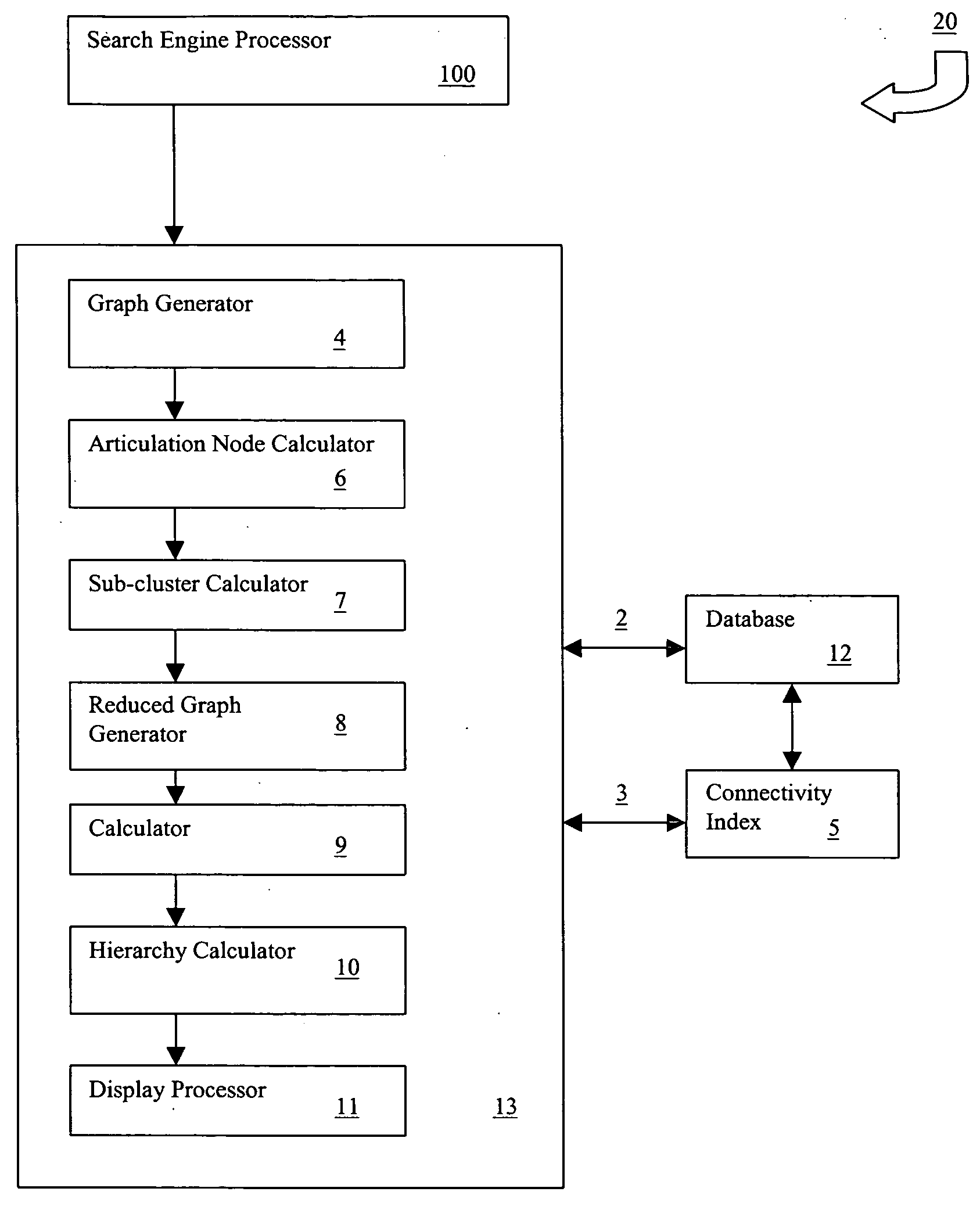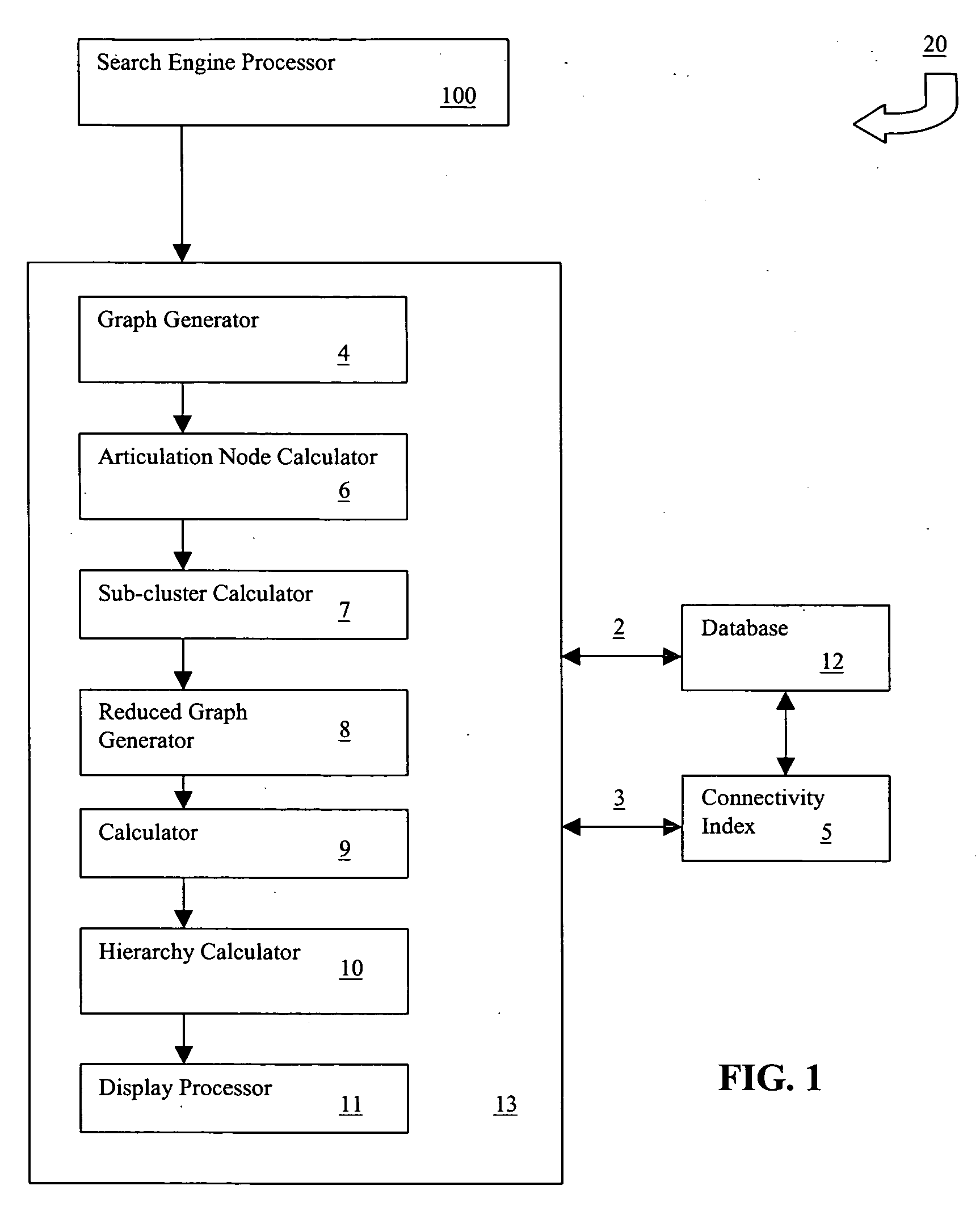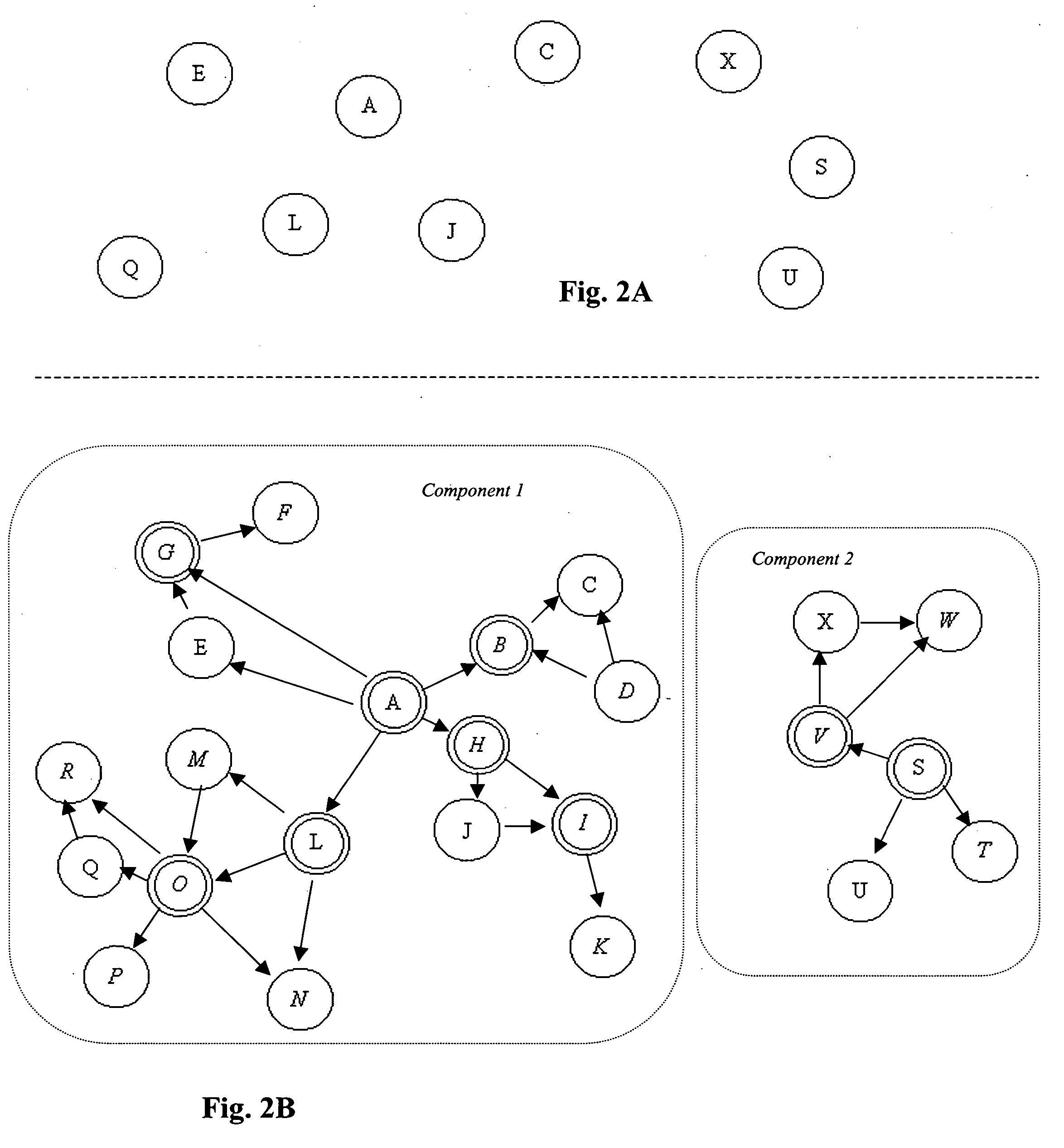System and method for automatic clustering, sub-clustering and cluster hierarchization of search results in cross-referenced databases using articulation nodes
a database and database technology, applied in the field of search and navigation a large database of cross-referenced entries or documents, can solve the problems of many users' frequent abandonment in frustration, over-constraint of the results list, and inability to search results in a large number of databases, so as to achieve easy and rapid zeroing.
- Summary
- Abstract
- Description
- Claims
- Application Information
AI Technical Summary
Benefits of technology
Problems solved by technology
Method used
Image
Examples
Embodiment Construction
[0032]FIG. 1 is a block diagram illustrating the functional elements of a search apparatus incorporating the principles of the invention. The apparatus 20 includes a search engine processor 100 and a clustering / sub-clustering / hierarchization processor 13. The latter processor comprises a local reference / links graph generator 4, a connected component and articulation node calculator 6, a sub-cluster calculator 7, a reduced graph generator 8, an ordering by prominence calculator 9, a hierarchy calculator 10, and a display processor 11. These elements are software modules and have been so identified merely to illustrate the functionality of the invention. The apparatus 20 communicates with a user and a database 12 along with a pre-compiled connectivity index 5, via I / O buses 2 and 3. The apparatus 20 is capable of communicating with a plurality of remotely located users over a wide area network (e.g. the Internet).
[0033]FIG. 2 gives an intuitive description of the current invention. T...
PUM
 Login to View More
Login to View More Abstract
Description
Claims
Application Information
 Login to View More
Login to View More - R&D
- Intellectual Property
- Life Sciences
- Materials
- Tech Scout
- Unparalleled Data Quality
- Higher Quality Content
- 60% Fewer Hallucinations
Browse by: Latest US Patents, China's latest patents, Technical Efficacy Thesaurus, Application Domain, Technology Topic, Popular Technical Reports.
© 2025 PatSnap. All rights reserved.Legal|Privacy policy|Modern Slavery Act Transparency Statement|Sitemap|About US| Contact US: help@patsnap.com



